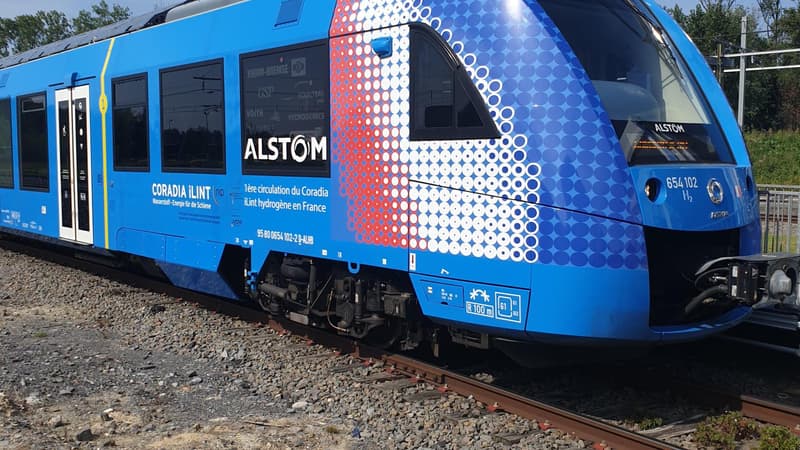An action that demonstrates once again the interest of hydrogen to propel trains that usually run on diesel. Trains still very numerous in Europe.
Alstom announces that a Coradia iLint serial train (without having undergone any technical modification) traveled the distance of 1175 km without refueling, emitting only water vapour. A record.
The train used on this trip was taken from the fleet of the German operator LNVG, which has now been operating commercially on the evb network since August 2022. For this project, Alstom has partnered with Linde, a specialist gas and engineering company, for the hydrogen supply.
More expensive but more virtuous
“Thanks to this trip, we have once again shown that our hydrogen trains have all the necessary characteristics to replace diesel trains”, enthuses Henri Poupart-Lafarge, CEO of Alstom, manufacturer of these trains.
This is enough to convince the national or regional authorities that manage public transport to buy these trains, which are certainly more expensive than conventional diesel trains, but much more virtuous and are part of the energy transition.
The new rail craze combined with environmental concerns are driving European demand for these trains new generation. “By 2035, around 15 to 20% of the European regional market could run on hydrogen,” Alexandre Charpentier, railway expert at Roland Berger, confirms to AFP.
In addition to Germany, which already has a fleet of 14 regional trains supplied by the French group, orders have been placed by Italy, Sweden and France.
In France, the manufacturer received in April 2021 a first order for 12 trains for the Bourgogne-Franche-Comté, Occitanie, Grand Est and Auvergne-Rhône-Alpes regions (3 ordered trains for each region plus 2 optional trains for the Grand Est region).
But, according to the information communicated by the company, it will be necessary to wait until the end of 2023 to see the circulation of a first test train, the start-up of serial production and the establishment of hydrogen infrastructures (refueling stations, in particular) .
An ecosystem that has yet to be completed
Then 2025 to obtain commercial service authorizations for a mini fleet of trains in order to collect the first feedback. Therefore, a large-scale commercial launch is not planned before 2025-2026, while the SNCF initially counted in 2024…
However, the hydrogen train is only one element of the ecosystem essential for its operation. Main problem: refuel the trains. Alstom and Hynamics Thus, it signed an association in November 2021 to “define an international refueling standard that will limit the immobilization of hydrogen trains during their filling”.
Although the autonomy of these trains is high, these 1,175 kilometers without refueling prove it, it will be necessary to deploy charging stations everywhere, which will take time. Some players like Hynamics also advocate “infrastructure pooling for different types of land transport” to smooth out investments. Therefore, we can imagine filling stations supplying hydrogen for both trains and coaches located close to the stations.
Another difficulty, the scarcity of the resource while the demand is getting stronger: automotive, chemical, steel… However, the productive infrastructures (not necessarily carbon free) are still few in Europe despite the ambitions shown by several States such as France and Germany.
Source: BFM TV


